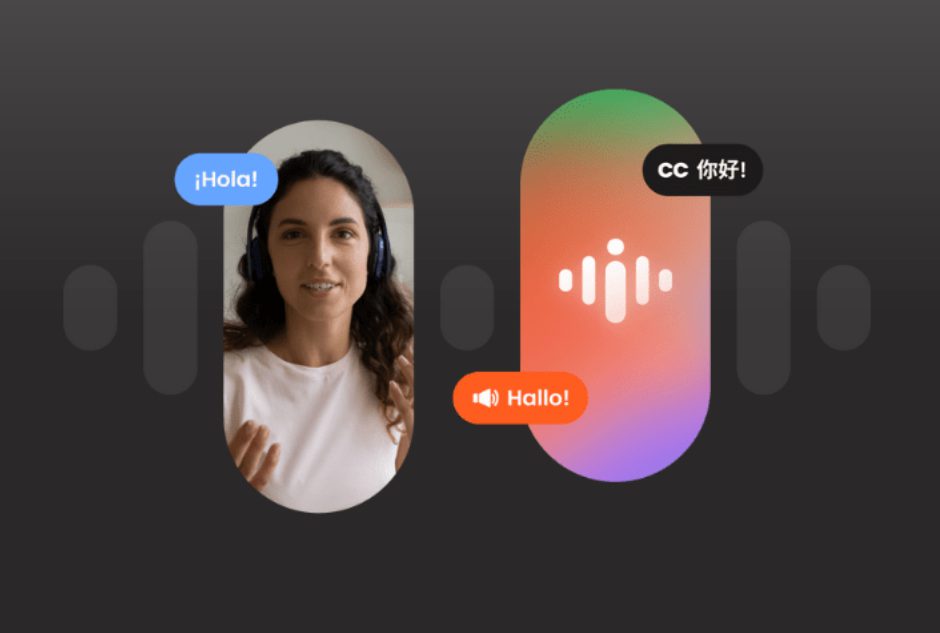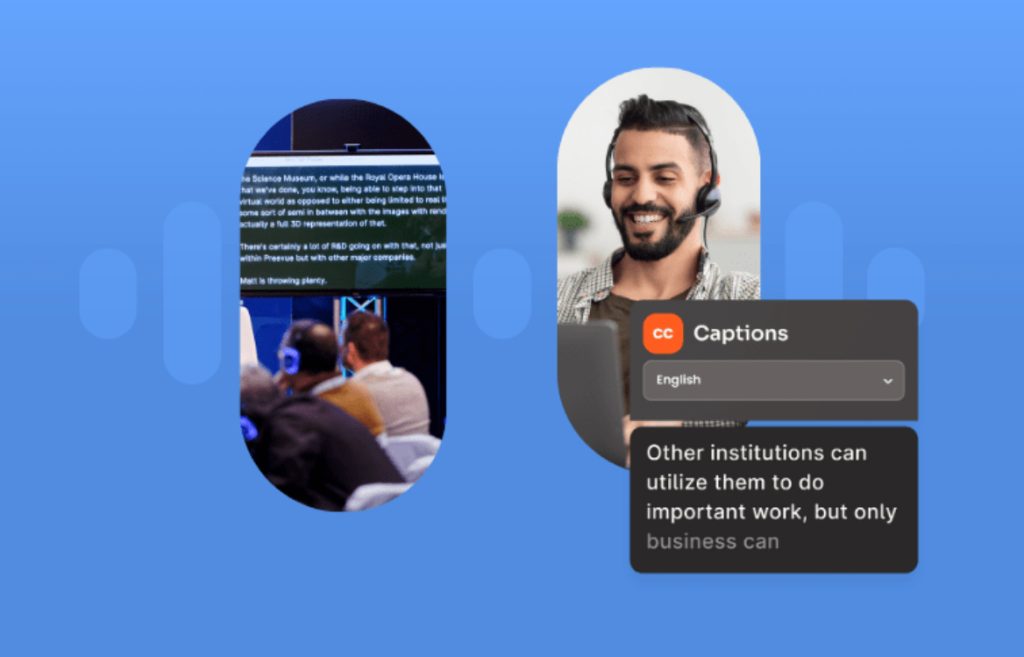In today’s globalised world, communication across different languages is more important than ever before. As businesses expand their operations into new markets, there is a growing need for interpreters to bridge language barriers and facilitate communication.
Traditionally, this has been done through physical interpreter booths, where interpreters are stationed at an event or meeting and provide interpretation services in person. However, with the rapid advancements in technology, virtual interpreter booths have emerged as a powerful alternative.
Indeed, more and more businesses are turning to virtual interpreter booths, with benefits that go far beyond their analogue counterparts.
The limitations of the traditional interpreter booth
Physical, analogue interpreter booths have been the go-to solution for multilingual communication for several decades. These soundproof booths are typically set up at conferences, meetings, and other events, and it’s where interpreters sit to provide interpretation services through an interpreting hard console.
However, physical interpreter booths have several limitations. One of the most significant drawbacks is their high cost, which includes not only the rental fees for the booth and analogue hardware equipment but also the expenses associated with travel, accommodation, and daily allowances for interpreters.
In addition, the administrative work required for physical interpretation is a significant factor in why more and more businesses are turning to interpreting software, which offers a more cost-effective and flexible solution.
Additionally, physical booths can take up a considerable amount of space, making it challenging to accommodate them in smaller venues. Moreover, the need for interpreters to be physically present at the event restricts their availability and limits the number of languages that can be offered.
High risk in times of uncertainty
In 2022, flight cancellations and delays reached a new high. Even today, global travel and inflation have brought a lot of uncertainty to event organizers.
If interpreters are unable to reach the venue in time, the success of events may be at risk. Organisers could ask them to fly in earlier, but that would add even more cost to the interpreting ticket.
What’s more, you may have an audience or even speakers joining remotely. Adding a hybrid element to your event can become very challenging if your interpreting technology isn’t designed to deal with flexible hybrid requirements and can’t integrate with meeting platforms.
The rise of the virtual booth
While physical interpreter booths have served as a crucial tool for multilingual communication, their limitations have paved the way for a more flexible and cost-effective solution: virtual interpreter booths.
Virtual interpreter booths work similarly to physical booths but with the added option of being entirely digital. Using a computer, a cabled internet connection, a microphone, and specialised software, interpreters can provide their services remotely from anywhere in the world, or even from a soundproofed booth.
The software used for virtual interpreter booths typically includes a video conferencing platform that allows interpreters to see and hear the event. It also includes features that enable them to collaborate with their colleagues and even support technicians during the interpretation.
The audio and video are transmitted in real-time through the software so that interpreters can follow the event smoothly and work efficiently while their interpretation is also sent in real-time to the audience.
Where interpreter software stands out
The advantages of choosing remote interpreting software over hardware range from lower costs and administrative burden to greater flexibility in the number of languages you may offer, to a reduction in carbon emissions:
1. Risk mitigation
Because interpreters are not necessarily required to be on-site, there is no risk of an interpreter failing to arrive on time or cancelling last minute. The correct linguistic talent can be quickly assigned when working with a remote interpreting partner.
2. Improved efficiency
Because of the ease of implementation, interpretation can even be provided on short notice. This speedy turnaround allows organisations and businesses additional planning and scheduling flexibility. It also makes it easy to fulfil additional language requirements.
3. Better tools for interpreters
In a 2007 study, the World Health Organisation ranked simultaneous interpreting as the third-most difficult job in the world, trailing only pilots and air traffic controllers. Providing interpreters with the right tools can help reduce stress and the risk of failure, ultimately helping them achieve excellent performance.
4. Better collaboration tools
The most effective virtual booth software will give interpreters powerful and intuitive tools for working with both their interpreting partners and support technicians. Included in this are specific video and chat capabilities with shortcut messages, clever handover tools, timers, and document-sharing options.
5. Better visibility
Sound booths are frequently positioned in less-than-ideal locations due to space restrictions: off to the side, in the back of the conference hall, or worse, in a different room. In order to respond to non-verbal cues, interpreters depend on having clear sight. Some virtual booths give interpreters high-quality video streaming of the stage and video broadcasts of their interpretation partners, so non-verbal communication doesn’t get missed.
6. Usage analytics
When broadcasting interpretation digitally to a mobile app or a computer, event managers can access streaming analytics to know how many users used each language channel. And interpreters can see how many people are actively listening to their interpretation.
7. AI-powered interpreter assistant tools
Interpreters only have a few seconds to comprehend what is being said and begin interpreting if they don’t have access to the complete speech’s transcript beforehand. Using cutting-edge interpreting software like Interprefy, interpreters can activate automated captioning and double-check important phrases, numbers, and other details.

Bringing interpreter software on-site
When deciding on the ideal setup, it doesn’t have to be a decision of having interpreters join remotely or having everything on site. The beauty of interpreting software is that it allows for an incredibly diverse array of setups.
Sometimes, not all interpreters can join you at the venue, which is why hybrid interpretation setups are important. Utilising interpretation software means you can work with some interpreters on-site, while other interpreters connect remotely.
Even when all interpreters join you locally, the use of interpreting software can simplify things massively. When linking numerous conference rooms, using interpretation software, which includes audio routing and monitoring software, eliminates the need for miles of wire and armies of technicians.
The World Government Summit is a perfect example of how technology can simplify things. Instead of running miles of wire, using an abundance of hardware, and relying on an army of technicians, remote simultaneous interpretation was delivered through the Cloud. All languages were streamed using the Cloud platform, a local audio network in each room, and a separate token in every event space.
The virtual interpreting booth has plenty of advantages and can help conferences reach their full language and scalability potential. Event organisers and interpreters shouldn’t let old myths keep them from reaching it.
































